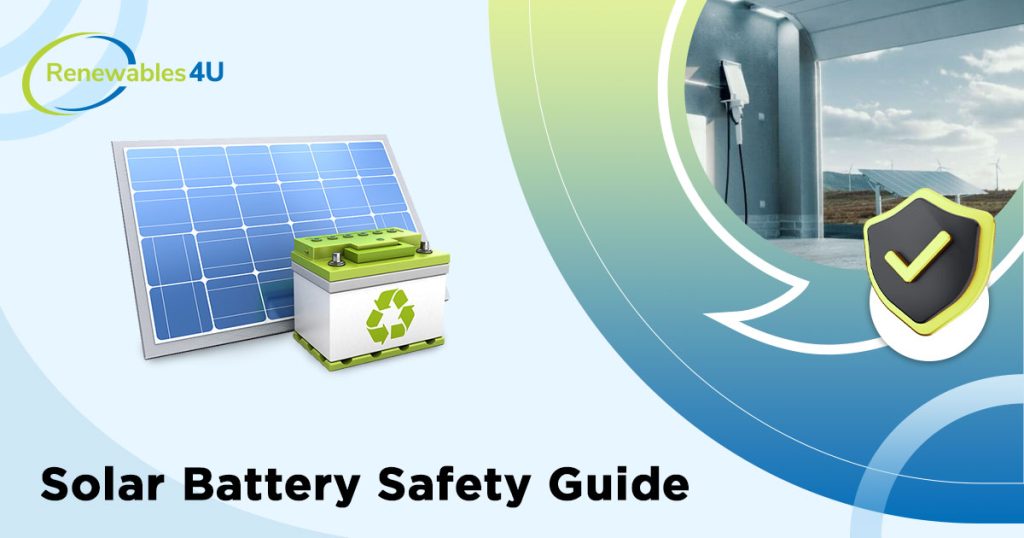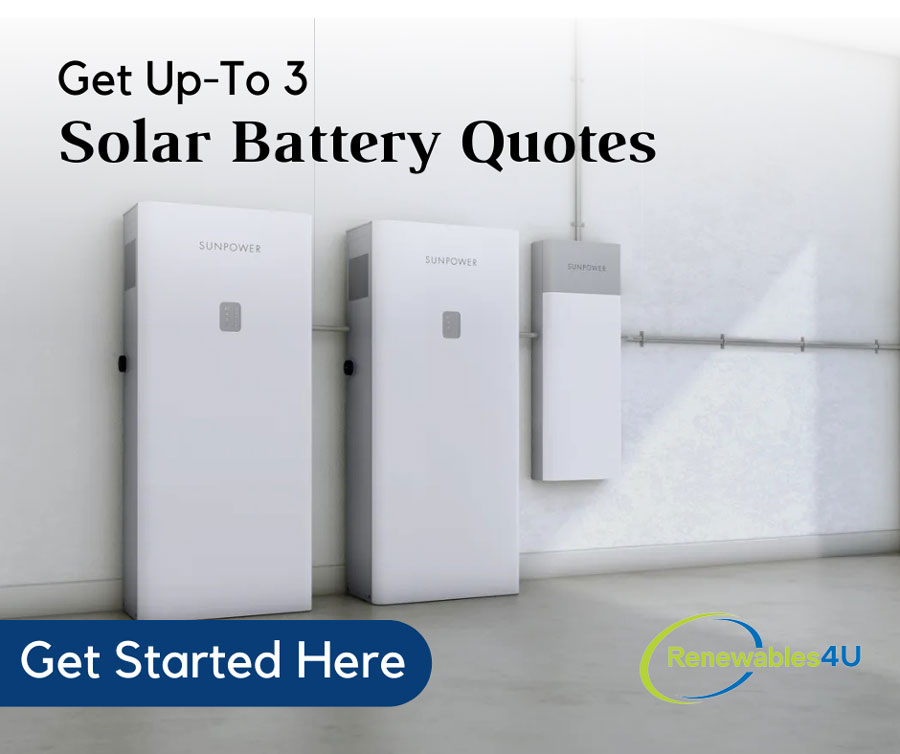
Have you ever wondered, “Are solar batteries safe to use at home?” You’re not alone! This solar battery safety guide helps answer this question for you.
The quick answer is, that with the proper installation and care, solar batteries can be a safe choice for your home.
The demand for solar batteries in Australia has surged. According to the 2024 Annual SunWiz Australian Battery Market Report, a record 57,000 battery systems, or energy storage systems, were installed in Australian homes in 2023 alone. This remarkable growth underscores the increasing popularity and adoption of solar home batteries, with a record-setting 656 MWh of residential battery capacity coming online.
So ensuring solar battery safety is a top priority. There are still worries about the safety of these batteries, like the risk of fires and harm to the environment.
Let’s see how this solar battery safety guide can assist you to use solar batteries safely at your place. And we’ll also look at what can go wrong if they’re not set up or looked after properly.
Are Solar Batteries Safe?
Home batteries are generally considered safe. However, people often worry about the risk of battery fires.
Yes, there are some small risks. But Australia has strict standards that help keep things safe.
It’s very rare for batteries to actually catch fire. Which shows that the safety protocols we have are working well.
If there are any battery recalls, you can find out about them on the ACCC’s website. This shows that people are taking steps to make sure batteries are safe.
The Dangers of Solar Batteries
Although solar batteries are mostly safe to use, it’s essential to understand the potential risks involved.
They come with their own set of risks if not handled correctly.
Fire Risks
The biggest worry with solar batteries, especially certain models, is that they can overheat.
When they get too hot, there’s a chance they could catch fire. This isn’t just a small flame; it can lead to serious fires that damage property and can even hurt people.
The Australian Competition and Consumer Commission (ACCC) has had to recall some batteries because they were at risk of catching fire.
Recalls and Safety Checks
Some solar battery brands have had issues and have been recalled. For example, LG had to recall some of their batteries because they were overheating.
If you have a solar battery system at home, it’s super important to check if your battery is one of those recalled.
You can usually find this information on the manufacturer’s website or through safety announcements from groups like the ACCC.
If you find out your battery is one of the recalled ones, you should turn it off right away and get in touch with the manufacturer.
They might replace your battery for free or fix the problem to make it safe again.
Solar Battery Safety Standards
When it comes to keeping your home safe with solar batteries, there are some key things you can do:
1. Choose a Quality Battery
Not all batteries are the same. Some go way beyond the basic safety standards. While the safest batteries might not be the cheapest, spending a bit more can mean better safety at home.
2. Pick an Accredited Installer
Watch out for installers who don’t do things by the book. You want someone who sticks to all the safety rules and does a great job installing your battery.
They should also be willing to come back and fix any small problems before they turn into big ones.
3. Regular Checks
Even if your battery seems fine, get a pro to check it every five years. This helps make sure everything’s working as it should.
4. Keep the Area Clean
Don’t let dirt or old newspapers pile up around your battery. Even though lithium batteries don’t need much maintenance, keeping them clean and away from anything flammable is important.
5. Know What to Do in an Emergency
Understand the steps to take if a battery fire happens. This includes leaving the area, calling emergency services, and not letting anyone near the battery if it’s damaged.
6. Protect Your System
Make sure your battery is in a sturdy enclosure that can handle our tough Aussie weather. This helps protect it from physical damage and overheating.
By following these guidelines, you can enjoy the benefits of solar power safely. Remember, a little bit of care and the right choices can go a long way.
Clean Energy Council’s Battery Safety Guide
To really understand battery safety, CEC published the Clean Energy Council’s Battery Safety Guide. It is a super helpful insight.
This solar battery safety guide encourages manufacturers and importers to exceed the minimum requirements. And more than that, it pushes them to do even better.
It stimulates a continuous improvement mindset within safety standards.
The Best Practice Guide
The Best Practice Guide from CEC covers battery storage equipment safety with a rated capacity of 1kWh to 200kWh. It outlines four mandatory compliance methods.
Method 1: Focuses on applying safety standards specifically designed for battery storage equipment. It includes additional specific requirements to ensure comprehensive safety measures are in place.
Method 2: Similar to Method 1 but with different safety standards or specific conditions. This method also includes separate specific requirements tailored to address unique safety concerns.
Method 3: This method is tailored for equipment that might already comply with certain uninterruptible power supply (UPS) standards but also needs to meet the specific safety requirements of battery storage equipment.
Method 4: Designed for new or unique battery storage solutions, this method allows for a more customized approach to compliance, ensuring that innovative products can still meet safety standards.
Each method incorporates primary and secondary safety standards. They ensure flexibility for manufacturers while maintaining a high safety standard.
Battery Assurance Program
There is also the Clean Energy Council’s Battery Assurance Program that adds a layer of assurance.
It features a list of lithium-based batteries (BS and BESS) meeting the Australian or international version of the lithium battery safety standard 62619:2017.
For a comprehensive list of currently approved batteries, refer to the Clean Energy Council’s Approved Batteries list.
Both the Best Practice Guide and the Clean Energy Council’s recommendations undergo regular reviews, ensuring ongoing suitability and relevance.
This commitment reflects the industry’s dedication to maintaining and elevating safety standards in the dynamic field of renewable energy battery storage.
The Crucial Role of Professional Installation
Always make sure your solar battery system is installed by a professional who knows what they’re doing. They need to be qualified CEC battery installers.
This can help avoid the common reasons batteries have problems in the first place. A lot of the time, the biggest safety risks come from bad installation jobs.
So, making sure a skilled and certified installer fits your solar battery is a big deal for keeping things safe and working right.
Final Thoughts on Safe Solar Battery Usage
Remember, while solar batteries are generally safe and a great way to store energy, it’s important to stay informed and take action if there’s a recall or safety warning.
Always prioritise safety to protect your home and family. Stick to the industry’s safety rules, like the ones from the Clean Energy Council and advice from this solar battery safety guide.
As more and more people switch to solar, following these safety guidelines is really important for a safe and green energy future.
Reviewed by

Neville Simmons
Co-Founder of Renewables4U and solar energy specialist. He has over ten years' experience in renewable projects, including residential, commercial, and off-grid systems. Former General Manager at a top solar firm in Western Australia, he combines entrepreneurial skills with a deep understanding of business operations and finance.

